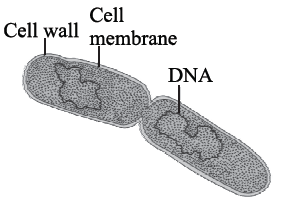Introduction
Aristotle
• Earliest to attempt a more scientific basis for classification.
• Used simple morphological characters to classify plants into trees, shrubs and herbs.
• Divided animals into two groups, those which had red blood and those that did not.
R.H. Whittaker (1969) proposed a Five Kingdom Classification.
• The kingdoms defined by him includes Monera, Protista, Fungi, Plantae and Animalia.
• The main criteria for classification used by him:
◊ Cell structure,
◊ Thallus organization,
◊ Mode of nutrition,
◊ Phylogenetic relationships.
Three Kingdom of Classification: Haeckel (Added new kingdom Protista)
Four Kingdom Classification: Copeland (Added Monera)
Earlier classification systems
• It included bacteria, blue green algae, fungi, mosses, ferns, gymnosperms and the angiosperms under ‘Plants’ (All having cell wall).
• It brought together the prokaryotic bacteria and the blue green algae with other groups which were eukaryotic.
• It also grouped together the unicellular organisms and the multicellular ones, say, for example, Chlamydomonas and Spirogyra were placed together under algae.
• The classification did not differentiate between the heterotrophic group – fungi, and the autotrophic green plants.
In Five Kingdom Classification
• Kingdom Protista has brought together Chlamydomonas, Chlorella (earlier placed in Algae within Plants and both having cell walls) with Paramoecium and Amoeba (which were earlier placed
in the animal kingdom which lack cell wall).
Kingdom Monera
• Bacteria are the sole members of the Kingdom Monera.
• They are the most abundant micro-organisms.
• Rigid cell wall of murein or peptidoglycan.
• Histones are absent. Ribosomes are of 70S type.
• Bacteria occur almost everywhere. Hundreds of bacteria are present in a handful of soil.
• They also live in extreme habitats such as hot springs, deserts, snow and deep oceans where very few other life forms can survive.
• Many of them live in or on other organisms as parasites.
Bacteria are grouped under four categories based on their shape:
▪ Spherical Coccus (pl.: cocci)
▪ Rod-shaped Bacillus (pl.: bacilli),
▪ Comma-shaped Vibrium (pl.: vibrio)
▪ Spiral Spirillum (pl.: spirilla)
# Wherever is U it means Singular
• They are very complex in behavior. Show the most
extensive metabolic diversity.
• Some bacteria synthesize their own food from inorganic substrates.
Archaebacteria
• They live in some of the most harsh habitats.
▪ Halophiles (salty areas): Strictly Anaerobes
▪ Thermoacidophiles (hot springs): Aerobic in nature
▪ Methanogens (marshy areas): Anaerobic in nature
• Archaebacteria differ from other bacteria in having a different cell wall structure (Branched chain lipids) and this feature is responsible for their survival in extreme conditions.
• Methanogens are present in the gut of several ruminant animals such as cows and buffaloes and they are responsible for the production of methane (biogas) from the dung of these animals and also helps in
digestion of cellulose.
Eubacteria
• They are characterized by the presence of a rigid cell wall (polysaccharide and amino acids), and if motile, a flagellum.
Types of flagellation:
▪ Monotrichous : Flagella at one end
▪ Lophotrichus : Group of flagella at one end
▪ Amphitrichus : Group of flagella at both ends
▪ Peritrichus : Flagella all over the body
• Cyanobacteria (also referred to as blue-green algae/ myxobacteria) have chlorophyll a similar to green plants and are photosynthetic autotrophs.
• Cyanobacteria are unicellular.
• Hormocyst: Thick walled multicellular akinete found in blue green algae (Cyanobacteria).
• A filament without mucilaginous sheath is called trichome, e.g., Nostoc
• Colonies are generally surrounded by gelatinous sheath.
• They often form algal blooms in polluted water bodies.
• Some of these organisms can fix atmospheric nitrogen in specialised cells called heterocysts, e.g., Nostoc and Anabaena.
• Oscillatoria: Shows Pendulum Movement
◊ Chemosynthetic autotrophic
• Obtained food by oxidation of inorganic substance.
• They play a great role in recycling nutrients like nitrogen, phosphorous, iron and sulphur.
◊ Heterotrophic bacteria
• They are the most abundant in nature. The majority are important decomposers.
• They are helpful in making curd from milk, production of antibiotics, fixing nitrogen in legume roots, etc.
• Cholera, typhoid, tetanus, citrus canker are well known diseases caused by bacteria.

• Bacteria reproduce mainly by fission.
• Sometimes, under unfavorable conditions, they produce spores.
Plasmids
• Plasmid term given by Lederberg
• Plasmids are extra-chromosomal small, circular double stranded DNA molecules
• R-factor is type of plasmid which contains genes for antibiotic resistance.
• Episomes: When plasmids are integrating into the bacterial DNA chromosomes.
Sexual Reproduction in Bacteria
▪ Conjugation: Direct contact between two cells.
Discovered by Lederberg and Tatum.
▪ Transformation: Transformation was first demonstrated in 1928 by British bacteriologist Frederick Griffith.
▪ Transduction: Transfer of Bacterial DNA with the help of bacteriophage / virus.
#Transduction was discovered by Zinder and Lederberg.

